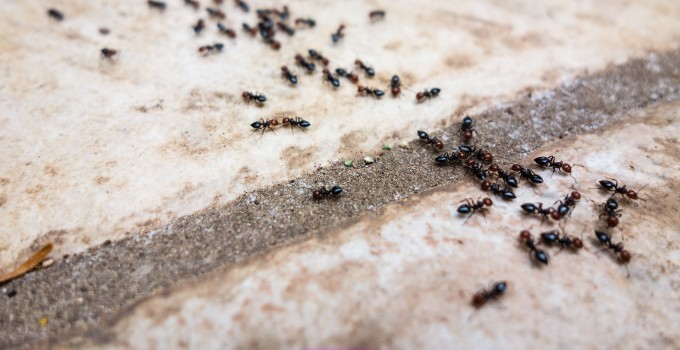There are over 10,000 species of ant worldwide. The most common of these tiny pests in Scranton are carpenter ants, pharaoh ants, and aptly-named nuisance ants, which include pavement ants and odorous house ants.
Facing an ant infestation on your own is a daunting task, which is why it’s always a good idea to call in the professionals at the first sign of a problem. Keep reading to learn more about the most common types of ants you’re likely to find in and around your home. Perhaps most importantly, you’ll learn what attracts them so you can take the appropriate steps to keep them away.
What are the most common ants in Pennsylvania?
Carpenter Ants: Attracted to damp and decaying wood, carpenter ants can cause cosmetic and structural damage to your home by nesting in your walls, so you may not know you have an infestation. They feed on insects and are also attracted to sugars. They don’t eat wood, but their large mandibles enable them to chew through it to create nesting tunnels. Here’s how to spot them:
- Black, brown, or reddish
- Large (1/4 – 1/2 inches in length)
- Soft rustling sounds in walls
- Piles of wood shavings near baseboards and window frames
- Most active at night
- Attracted to wood and insulation suffering from water damage
Pharaoh Ants: Pharaoh Ants are infamous for being especially challenging to remove, causing an array of health problems if left unchecked. Tiny and persistent, pharaoh ants are attracted to food — especially sweets — and dead insects. They can spread salmonella, staphylococcus, and streptococcus. Because of their size, they can hide anywhere. How to recognize them:
- Tiny (1/16th of an inch in length)
- Pale yellow with red and black markings
- Segmented antennae
- Sometimes live in light sockets
- Attracted to electricity, small insects, fallen crumbs and food
Pavement Ants: Pavement ants are the ants that you’ll find creating small mounds between sidewalk and driveway slabs. Loose, thin dirt, or sand that lays between sidewalks is used to create a nest where several tiny pavement ants live. They will rarely move indoors, but they are still a nuisance because of their resiliency. Recognizing pavement ants:
- Small (1/4 inches long)
- Brown or black
- Lighter appendages
- Found outdoors within small mounds created between sidewalk and driveway slabs
- Attracted to sweets and fallen crumbs when indoors
Odorous House Ants: The most common type of nuisance ant that you’ll encounter in your home is the odorous house ant, which smells like coconut when crushed. Have you ever seen tiny black ants trailing around your bathroom or kitchen? These are odorous house ants, also called nuisance ants. Most homeowners have trouble with odorous house ants when they get into pantry items, dog bowls, under sinks and dishwashers, or in bathrooms. How to spot an odorous house ant:
- Tiny (1/16 – 1/8 inches long)
- Brown or black
- Segmented and oval-shaped
- Found indoors and outdoors
- Attracted to fallen crumbs, excess moisture, dog food bowls left out overnight, and spilled beverages
How to Prevent Ants From Invading Your Home
One of the most important ways you can prevent ants is to keep your home in good shape. Dispose of any expired food items properly, keep your sweets and pet food in airtight containers, and clean regularly. Always repair water damage and fix leaking pipes and hoses. If you can’t find the source of an ant infestation in your home, call us for a free inspection.
How can Seitz Bros. get rid of the ants in my home?
If you’re dealing with ants in your home, the most effective way to get rid of them is by contacting a professional pest control service. Seitz Bros. can identify which species has invited itself into your space and exterminate them as well as prevent them from returning.
Please don’t attempt to treat the problem yourself before our experts can inspect your home. By using store-bought products, you could be pushing the infestation from one room to another rather than getting to the physical nest. Let Seitz Bros. do the hard work and watch your pests disappear. Call us or fill out the contact form on this page to get started!

